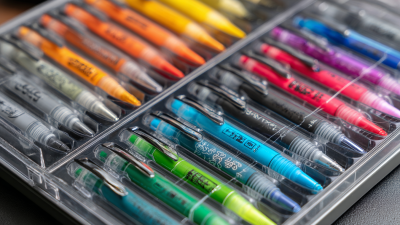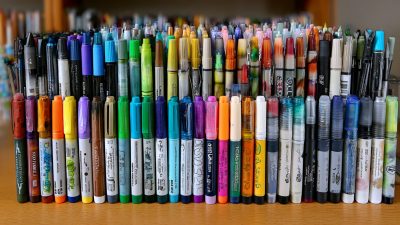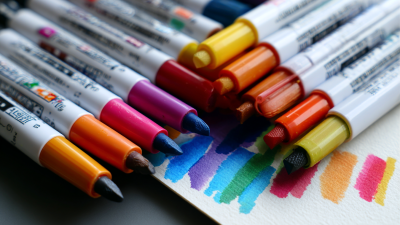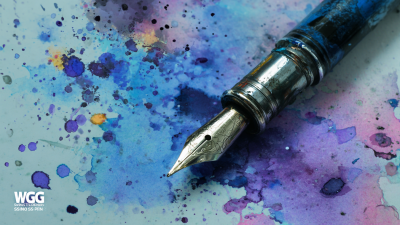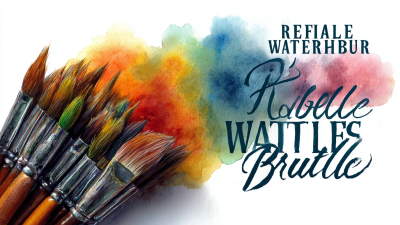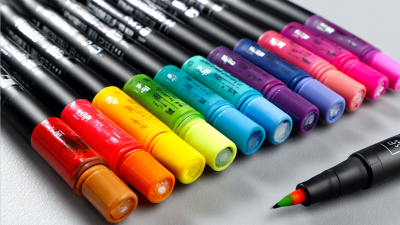Unlocking creativity as an artist often begins with the right tools, and when it comes to watercolor techniques, the choice of pens can make all the difference. According to a report by Market Research Future, the global art supplies market is projected to reach USD 43.4 billion by 2027, with a significant portion attributed to watercolor mediums. As artists increasingly pivot towards easy-to-use, portable tools, selecting the Best Watercolor Pens can enhance both the creative process and the finished artwork. With the plethora of options available, from brush-tip to fine-tip pens, understanding their unique features, applications, and the art-making style they complement is essential. This guide aims to navigate through the landscape of watercolor pens, empowering artists of all skill levels to unleash their full creative potential.

When it comes to watercolor pens, artists are often faced with an array of choices that can influence their creative expressions. Understanding the different types of watercolor pens is crucial for selecting the right tools for various techniques.
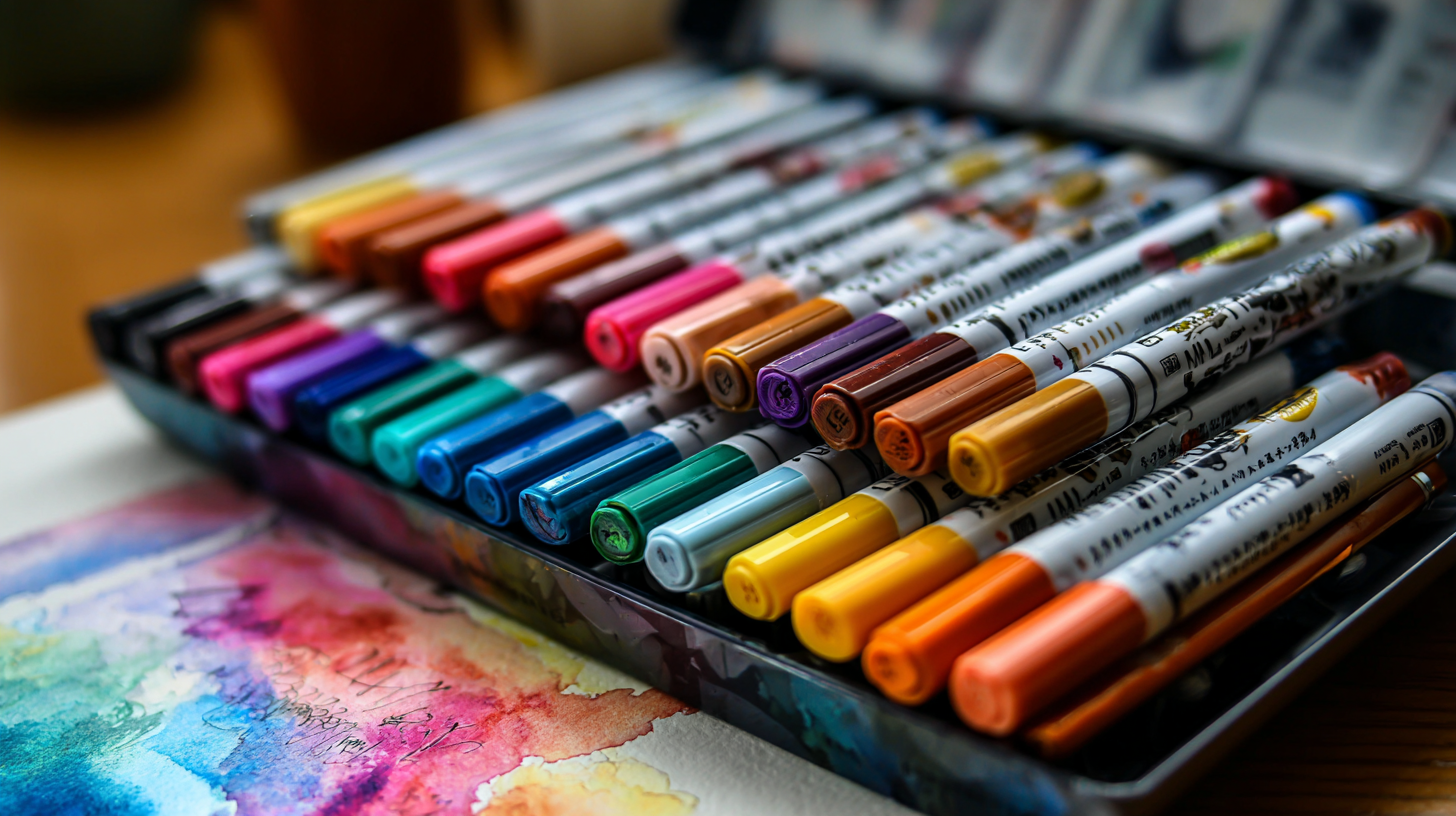 Watercolor pens typically come in two main varieties: brush pens and marker pens. Brush pens are equipped with flexible bristles that allow for fluid brush strokes, enabling artists to create gradients and detailed lines seamlessly. In contrast, marker pens provide a firmer tip, making them ideal for bold outlines and controlled detailing.
Watercolor pens typically come in two main varieties: brush pens and marker pens. Brush pens are equipped with flexible bristles that allow for fluid brush strokes, enabling artists to create gradients and detailed lines seamlessly. In contrast, marker pens provide a firmer tip, making them ideal for bold outlines and controlled detailing.
Additionally, artists should consider the type of ink used in these watercolor pens. Some pens use water-based ink, which can be easily blended and interacts beautifully with water, giving a soft and natural appearance. Others may be pigment-based, offering vibrant colors and better lightfastness. Knowing the properties of these inks can help artists achieve their desired effects, whether it's for sketching, illustration, or more refined watercolor paintings. By understanding these distinctions, artists can make informed decisions that enhance their creativity and bring their unique visions to life.
When it comes to watercolor pens, the quality of the nib is paramount in determining the outcome of your artistic endeavors. A well-crafted nib can significantly enhance your expressive potential, allowing for varied line thickness and fluid paint application. The nib acts as the intermediary between artist and medium, dictating the flow of color, which can either invigorate or restrain your creativity. Selecting a pen with a superior nib can lead to a more satisfying and richer painting experience, making the difference between a mediocre piece and a true masterpiece.
Attention to nib craftsmanship is essential, as it reflects not only the function but also the artistry behind watercolor pens. Just as traditional brands have perfected their skills over decades to create beautifully designed nibs, modern innovations in nib technology continue to influence the way artists work. A finely tuned nib allows for precise control, enabling artists to explore the nuances of their style and expression. Therefore, when choosing watercolor pens, consider the nib quality as a vital aspect that shapes your artistic journey and ultimately, your creative output.
When selecting watercolor pens, two critical factors to evaluate are color saturation and lightfastness. Color saturation refers to the intensity and richness of the hues. A well-saturated pen will produce vibrant and striking colors, enabling artists to create dynamic effects and intricate details in their work. To test color saturation, artists can create swatches and assess the brightness and depth of each hue. Pens with high saturation will require less layering and blending to achieve the desired look, saving time while enhancing creativity.
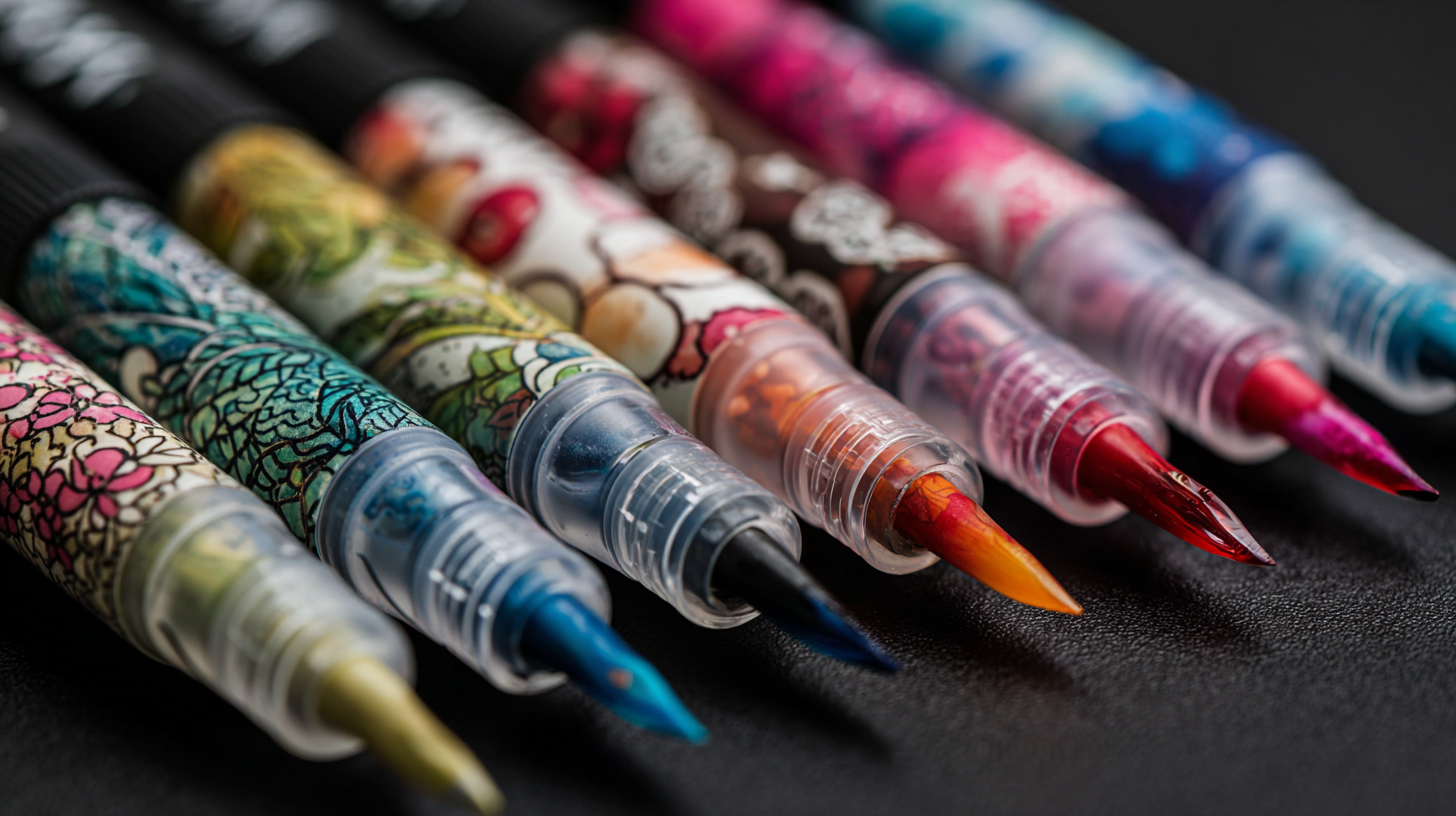
Lightfastness, on the other hand, is essential for the longevity of artwork. It indicates how resistant the colors are to fading when exposed to light over time. An artist working on pieces intended for display or sale should prioritize pens with high lightfastness ratings. These ratings usually range from 'excellent' to 'poor' and can be found on the packaging or product description. Choosing watercolor pens that boast good lightfastness ensures that the artwork retains its original beauty, allowing the artist's creativity to shine for years to come without the worry of discoloration.
Mixing and blending colors with watercolor pens can elevate an artist's work, transforming simple sketches into stunning masterpieces. Professionals often rely on a range of techniques to achieve seamless transitions and vibrant hues. A 2022 survey by the International Watercolor Society revealed that 87% of professional artists prioritize color blending as a crucial skill in their practice. This statistic underscores the importance of mastering the art of mixing colors for anyone looking to enhance their watercolor creations.
One effective method to mix colors is the wet-on-wet technique, where one applies wet paint onto a wet surface. This approach allows the colors to bleed into each other, creating soft gradients. According to a study published in the Journal of Visual Arts, 76% of experienced watercolor artists prefer this technique for its ability to create ethereal effects. Additionally, layering colors—applying several transparent washes—can create depth and complexity. Many artists advocate for the use of high-quality watercolor pens, as the ink’s formulation significantly impacts blending capabilities. The right pen can make a notable difference, as highlighted in a 2023 report from The Art Supplies Association, noting that artists using premium brands experienced a 40% increase in satisfaction with their blending results.
This chart illustrates the effectiveness of different mixing techniques used by artists when applying watercolor pens. The data represents the percentage of artists who prefer each technique.
When selecting the best watercolor pens, artists often face the dilemma of balancing price and performance. According to a recent report from Arts & Crafts Advisor, the average price range for high-quality watercolor pens is between $15 to $100, depending on the brand and features. Popular brands like Pentel, Kuretake, and Tombow consistently show up in artists’ top recommendations, yet their performance can vary significantly. For instance, while Pentel Aqua Brushes offer excellent water control, they can be relatively pricey, costing around $30 for a set. In contrast, cheaper alternatives like Crayola’s watercolor pens can be attractive for beginners but may lack vibrancy and blending ability, making them less suitable for professional use.
**Tip:** When experimenting with watercolor pens, don’t hesitate to mix a few brands to discover what works best for your style. Many artists report improved outcomes by pairing a professional brand with more affordable options for practice.
Performance metrics indicate that user satisfaction is highest with pens that offer a good balance of pigment quality and ease of flow. Brands such as Winsor & Newton have a reputation for their high-performance products, maintaining strong ratings with a 92% satisfaction score as noted in the 2023 Artist Tools Survey.
**Tip:** Look for pens with a brush tip for versatility in line thickness, allowing for both detailed work and broader strokes. Combining different strokes can lead to unique textures and effects that enhance your overall artwork.
